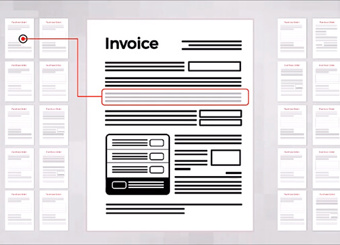Reorganizing the AP department: with or without accounts payable automation
Managing the financial organization is a complicated task that requires flexibility and finesse, as well as forethought for future growth and events that will impact the financial system from different angles. Accounts payable plays an integral role in the financial organization. As of recent years, it has become a focus for the finance team’s leadership for implementing improvement initiatives.
Frequently, when management begins to look into improving the accounts payable process, they reveal years’ worth of messy data and inefficient processes that have been overlooked or ignored as other initiatives took precedence. As this is uncovered, there is debate as to whether the best course of action is to implement a solution that can fix the current process or to begin a reorganization of the accounts payable department and implement policies and procedures that will aim to set a better landscape for AP.
While reorganization and well-enforced policies and procedures can produce some benefit, there is little chance that they will provide the efficiencies provided by an accounts payable automation solution. In the likely event that such a solution is implemented in the future, it will require additional reorganization and modifications to the prior changes put in place.
Accounts payable automation as a first step
One of the most significant risks for a company is organizational change. It opens the door to unexpected repercussions, some of which are unavoidable. No matter what the catalyst is – mergers and acquisitions, strategic shift in business, management changes – it’s important to be aware of potential operational missteps that could spell disaster for the financial organization.
There is a significant risk in taking internal reorganization as a first step toward improving the accounts payable process. You are almost certain to disrupt the AP process and cause more chaos for the invoice process by changing reporting structures or headcount fluctuations. And changes to policies and procedures comes with an unavoidable slow down to the invoice process as staff members are educated and the rest of the organization gets accustomed to how they interact with AP. This disruption is likely for naught, as a modern AP solution should come with best-practice recommendations for workflow and processes that support a touchless accounts payable process.
While there is also some risk in deploying a new solution, such as AP automation, the key to protecting your organization from avoidable risks is to choose a solution provider that has demonstrated successful deployments to organizations of similar structure to your own (ERP instance, a similar number of invoices, similar industry). A viable provider can prove that they are an equal partner in the implementation process as well as a long-term resource for the length of your relationship with them.
Accounts payable automation – no longer a luxury
As opposed to the consensus about automation solutions over the past decade, the prioritization for accounts payable automation has been greatly increased among modern businesses. Today, it is widely recognized that automation can no longer be put off into next year’s budget process, but rather is a project road-mapped for the coming year. The benefits of implementing AP automation are inarguably significant over other improvement initiatives, such as internal organization changes or policy and procedure updates alone.
At this stage, it’s important to note that not all automation is equal. The modern automation solution goes far beyond the simple process automation and digital workflow tools from the past decade. True automation should not only provide the efficiency of automated invoice processing but should unlock key visibility into the company’s financial dashboard.
AP automation also transforms the AP team’s role from a reactive and debt-focused back office to strategic business partners. They are no longer slowed down by manual tasks and surprised by unexpected invoices or supplier inquiries. Instead they’re free to focus on more important tasks such as cash management and supplier network optimization. For these reasons, implementing AP automation is a top priority for many organizations looking to achieve real efficiency and control gains in 2019.
The right way to reorganize AP
The way you organize your AP department post automation depends on many factors. There’s no “secret method” of striking the right balance for every organization. But there are some common factors to consider that will get your AP department on the right track toward better support of the AP process post-automation implementation. Companies who are at a more mature life cycle stage of business (read: established and somewhat stable) are more likely to have automated or plans to automate their accounts payable process. For these companies, it’s essential that they function at top efficiency levels, with processes and solutions in place to drive machine-like precision.
Organizations also need to be organized in a way to support driving peak visibility into financial metrics to ensure control and protection of the company’s cash flow. Supporting the CFO’s dashboard requires setting up the AP and finance team with designated analysts, and implementing regular reporting and delivery of analytics that are central to the company’s financial health.
If improving your accounts payable process is a task on your 2019 to-do list, take into consideration your current levels of automation and whether to explore implementing true accounts payable automation before establishing any plans for internal organization. Your result will be a much more streamlined, efficient process that supports the financial dashboard your organization depends on for visibility. And your AP team will thank you.






